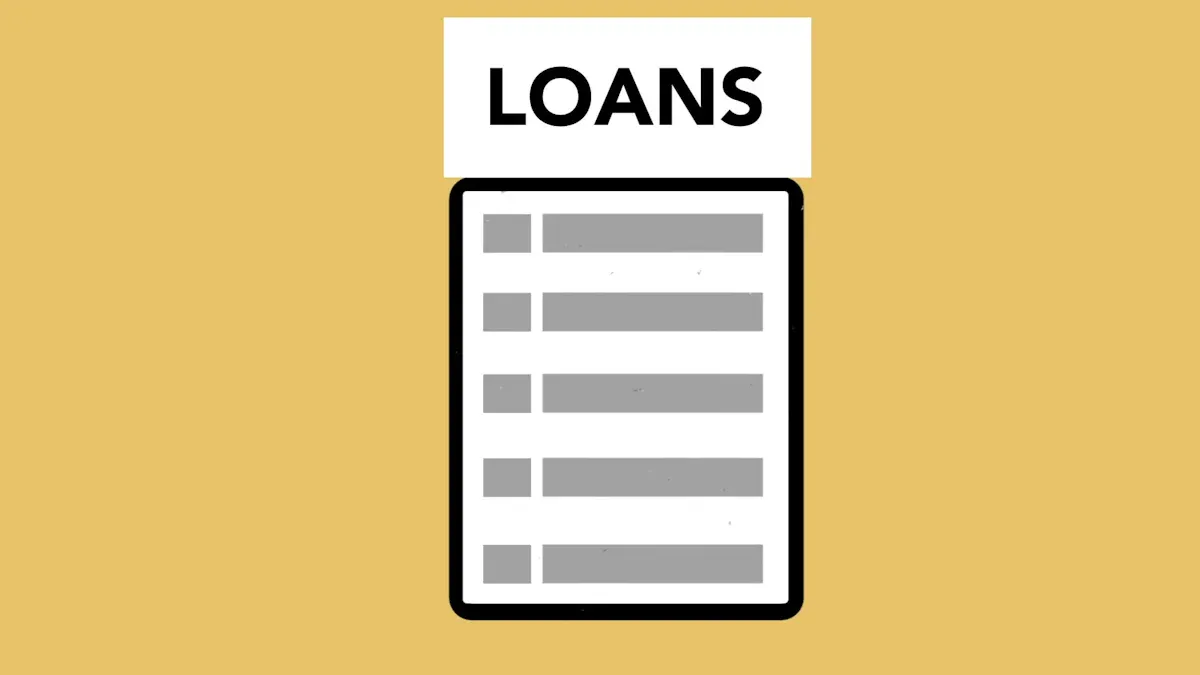Image Source: pexels
Understanding the loan approval process is crucial for small businesses, and this Comprehensive Guide to the Small Business Loan Approval Process can make all the difference. I’ve seen how preparation and knowledge can transform outcomes. For instance:
- 85% of small business owners value fast loan approvals when choosing a lender.
- Only 22% know their preferred financing type, highlighting a need for clarity.
This guide equips you to navigate the process with confidence and precision.
Key Takeaways
- Learn about loan types to pick the right one. Each loan, like term loans or SBA loans, has a specific use.
- Get ready before asking for a loan. Check if you qualify, review your finances, and collect needed papers to boost approval chances.
- Talk clearly with lenders during the process. Good communication builds trust, helps get better terms, and strengthens relationships.
Overview of Small Business Loan Types
When exploring financing options for small businesses, I’ve found that understanding the variety of loan types is essential. Each type serves a unique purpose, and knowing the differences can help you make informed decisions.
Term Loans
Term loans are straightforward. You borrow a lump sum and repay it over a fixed period with interest. These loans work well for long-term investments, like expanding operations or purchasing property. I’ve noticed that traditional banks often offer competitive rates, but they require strong credit scores and detailed financial documentation. Online lenders, on the other hand, provide faster approvals, which aligns with the trend that 85% of small business owners prioritize speed in loan approvals.
SBA Loans
SBA loans are backed by the U.S. Small Business Administration. They’re ideal for businesses seeking lower interest rates and longer repayment terms. In 2023, the average SBA loan amount was $479,685, and 59% of applications were approved. These loans demand thorough preparation, but their benefits outweigh the effort. I always recommend SBA loans for businesses with solid financials looking for affordable financing.
Business Lines of Credit
A business line of credit offers flexibility. You can borrow funds as needed, up to a set limit, and only pay interest on what you use. This option is perfect for managing cash flow or covering unexpected expenses. I’ve seen how online lending platforms have made lines of credit more accessible, transforming the industry with quick approvals and alternative credit scoring methods.
Equipment Financing
Equipment financing helps businesses purchase machinery or tools without draining cash reserves. The equipment itself serves as collateral, reducing risk for lenders. This type of loan is particularly useful for industries like manufacturing or construction. I often advise clients to explore this option when upgrading essential equipment.
Invoice Financing
Invoice financing allows businesses to borrow against unpaid invoices. It’s a lifeline for companies facing cash flow challenges. Key performance indicators, like Days Sales Outstanding (DSO) and Invoice Default Rate, help measure its effectiveness. For example, maintaining a DSO of 30 days or less ensures timely collections, while keeping the default rate under 2% minimizes risks.
Merchant Cash Advances
Merchant cash advances provide quick access to funds, but they come at a high cost. Approval isn’t tied to credit scores, making them accessible to businesses with poor credit. However, equivalent interest rates can range from 40% to 350%. For instance, a $100,000 advance costing $125,000 over 52 weeks translates to a 25% interest rate—significantly higher than traditional loans. I always caution clients to weigh the pros and cons carefully.
Choosing the right loan type depends on your business needs and financial situation. By understanding these options, you can navigate the Comprehensive Guide to the Small Business Loan Approval Process with confidence.
Pre-Application Preparation
Assessing Eligibility Criteria
Before applying for a loan, I always recommend evaluating your eligibility. Lenders typically consider factors like credit score, business age, and annual revenue. A higher credit score reflects responsible financial management and increases approval chances. To make this clearer, here’s a table summarizing key factors that influence eligibility:
| Factor | Description |
|---|---|
| Credit Score and History | A higher credit score indicates responsible financial management, increasing loan approval chances. |
| Business Plan and Financial Statements | A well-crafted business plan and accurate financial statements demonstrate financial health and repayment ability. |
| Collateral | Offering collateral reduces lender risk and provides security in case of default. |
By understanding these criteria, you can better position your business for success.
Evaluating Financial Health
Lenders want to ensure your business can repay the loan. I always advise reviewing your financial health before applying. Start by analyzing your balance sheet, income statement, and cash flow. These documents reveal your business’s profitability and stability. Strong financials not only improve your chances of approval but also help you negotiate better terms.
Gathering Required Documentation
Thorough documentation is essential for a smooth application process. I’ve seen how submitting accurate and complete documents can significantly increase approval rates. Here’s why:
- Lenders use these documents to assess your eligibility.
- Accurate underwriting documents reduce delays and improve approval chances.
- An organized collection of documents streamlines verification and addresses potential issues promptly.
Prepare items like tax returns, bank statements, and proof of ownership. This preparation saves time and builds lender confidence.
Crafting a Strong Business Plan
A strong business plan is your roadmap to success. It outlines your goals, strategies, and financial projections. Lenders closely examine this document to determine loan feasibility. I’ve noticed that a well-crafted plan enhances approval chances. The table below highlights its importance:
| Evidence Type | Description |
|---|---|
| Business Plan Importance | A well-crafted business plan outlines goals, strategies, and financial projections, enhancing loan approval chances. |
| Financial Statements | Lenders assess financial health through balance sheets, income statements, and cash flow statements to evaluate repayment ability. |
| Loan Approval Factors | Lenders closely examine the business plan and financial statements to determine the feasibility of the loan. |
Invest time in creating a detailed plan. It’s a critical step in the Comprehensive Guide to the Small Business Loan Approval Process.
Finding the Right Lender
Exploring Lender Options (Banks, Credit Unions, Online Lenders)
Choosing the right lender starts with understanding the available options. I always recommend exploring banks, credit unions, and online lenders. Banks and credit unions often provide term loans, lines of credit, and equipment financing. They offer competitive interest rates but have strict eligibility requirements. Online lenders, on the other hand, excel in speed and accessibility. They cater to businesses with less-than-perfect credit or those needing quick funding.
| Type of lender | Loans offered | Description |
|---|---|---|
| Bank or credit union | Term loans, lines of credit, equipment financing | Attractive rates and terms, but stringent eligibility guidelines. |
| SBA-approved lenders | SBA loans (7(a), microloans, etc.) | Government-backed loans with long repayment terms and competitive rates. |
Comparing Loan Terms and Interest Rates
Loan terms and interest rates vary significantly across lenders. I’ve seen how shopping around can save businesses thousands of dollars. For example, securing a lower APR on a business loan reduces monthly payments and total interest. Factors like credit score, business history, and whether the loan is secured or unsecured influence these terms. I always advise comparing multiple offers to find the best fit for your financial situation.
Matching Lenders to Business Needs
Every business has unique needs, and lenders must align with them. Seasonal businesses, for instance, require lenders who understand cyclical cash flow. Startups often need flexible repayment options, while established businesses might prioritize loans for expansion. I’ve found that matching lender specialties to your specific challenges ensures better financial solutions.
Reviewing Lender Reputation and Feedback
A lender’s reputation plays a crucial role in the decision-making process. Trust stems from integrity and reliability. Positive customer feedback, including reviews from previous borrowers, provides valuable insights. I always look for lenders with clear communication and transparent loan terms. This builds confidence and fosters a strong borrower-lender relationship.
Finding the right lender is a critical step in the Comprehensive Guide to the Small Business Loan Approval Process. By evaluating options, comparing terms, and researching reputations, you can secure the best financing for your business.
The Loan Application Process

Image Source: unsplash
Completing the Application Form
Filling out the loan application form is the first step in securing funding. I always recommend reviewing the form thoroughly before starting. Missing fields or incorrect information can lead to delays or rejections. Common errors include lack of preparation, inadequate documentation, and miscommunication with lenders. To avoid these, I suggest creating a checklist of required details. Statistical evidence shows that identifying frequent mistakes helps lenders guide borrowers more effectively, reducing errors and improving outcomes.
Submitting Supporting Documents
Submitting accurate and complete documents is critical for approval. Lenders rely on these to assess eligibility and financial health. Timely submission improves approval rates and avoids delays. I’ve seen how incomplete submissions often result in rejections. Organizing documents like tax returns, bank statements, and proof of ownership beforehand ensures a smoother process. This step aligns with the preparation stage of the loan process, which typically takes 2-4 weeks, as shown below:
| Stage | Duration | Description |
|---|---|---|
| Preparation Stage | 2-4 weeks | Gathering necessary documents to demonstrate financial health and future prospects. |
| Application and Initial Review | 1-2 weeks | Submitting the application and initial review by the lender for eligibility criteria. |
Communicating Effectively with Lenders
Clear communication with lenders can significantly improve application outcomes. I always emphasize transparency when discussing financial needs and repayment plans. Digital communication methods, like in-app messaging, have become popular for their speed and accessibility. Tailoring communication strategies to the lender’s preferences also strengthens relationships. These practices ensure that both parties remain aligned throughout the process.
Avoiding Common Mistakes
Avoiding mistakes during the application process increases the likelihood of approval. I’ve noticed that errors often stem from insufficient preparation or miscommunication. To minimize these, I recommend double-checking all forms and documents before submission. Staying organized and maintaining open communication with lenders also helps. These steps ensure a smoother experience and align with the principles outlined in this Comprehensive Guide to the Small Business Loan Approval Process.
Loan Approval and Closing
Understanding the Underwriting Process
The underwriting process evaluates your business’s financial health and repayment ability. I’ve noticed that this stage often takes 2-3 weeks, depending on the lender. Large banks approve only 13.8% of small business loans, while smaller banks approve 19%. Non-bank lenders, with a 25% approval rate, offer the best chances. Choosing the right lender can significantly impact your success. Many lenders now use a cash-flow-first approach, which speeds up decisions and improves approval rates. This method reduces credit losses and operational costs, making it a win-win for both parties.
| Stage | Timeline |
|---|---|
| Underwriting | 2-3 weeks |
| SBA Review | 1-2 weeks |
| Closing | 1-2 weeks |
Negotiating Favorable Loan Terms
Negotiation is key to securing favorable terms. I always recommend understanding the lender’s objectives. Borrowers can leverage current market conditions, such as high interest rates and increased private credit availability, to negotiate better terms. For example, repricing and refinancing opportunities often arise in borrower-friendly markets. I’ve seen how businesses that prepare well and communicate their needs effectively achieve more flexible repayment schedules and lower interest rates.
Signing the Agreement
Signing the loan agreement finalizes the process. I always advise reviewing the terms carefully before signing. Pay attention to repayment schedules, interest rates, and any hidden fees. Ensure the agreement aligns with your business goals. This step solidifies the relationship with your lender and sets the stage for a successful partnership.
Receiving the Funds
Once the agreement is signed, funds are disbursed. Efficient preparation ensures a smooth process. I recommend preparing the SBA Loan Authorization 5-7 days before closing. Confirm all third-party signatures and account for lender fees, including recording costs. These steps prevent delays and ensure you can access the funds promptly to meet your business needs.
The loan approval and closing process is a critical step in the Comprehensive Guide to the Small Business Loan Approval Process. By understanding underwriting, negotiating terms, and preparing for closing, you can secure the funding your business needs.
Repayment and Building a Positive Relationship
Setting Up a Repayment Schedule
Setting up a structured repayment schedule is essential for managing business debt effectively. I always recommend creating a plan that aligns with your cash flow. This approach ensures timely payments and avoids unnecessary financial strain. For example, structured schedules help calculate the total loan cost and prevent falling into debt traps.
| Loan Type | Total Loan Cost | Importance of Structure |
|---|---|---|
| Standard | Varies | Helps avoid debt traps |
| Flexible | Varies | Encourages timely payments |
Careful planning is key. It allows you to stay on top of your obligations and maintain a positive relationship with your lender.
Avoiding Missed Payments
Missed payments can have serious consequences for your business. I’ve seen how defaults negatively affect both personal and business credit scores. This can hinder your ability to secure future financing. Additionally, lenders may take collection actions, which can strain your operations. To avoid this, I suggest automating payments or setting reminders. Staying proactive ensures you meet deadlines and maintain your financial credibility.
Maintaining Open Communication with Lenders
Open communication with lenders builds trust and ensures mutual understanding. I always encourage borrowers to be transparent about their financial situation. For instance, if you face challenges, inform your lender immediately. This allows them to offer viable solutions, such as adjusting repayment terms. Regular updates from lenders about market changes also help you stay informed. Strong communication fosters a supportive relationship, which benefits both parties.
Strengthening Relationships for Future Loans
Building a strong relationship with your lender can improve future loan terms. I’ve noticed that lenders value trust and reliability. Borrowers who demonstrate flexibility and adaptability often receive better financial products. For example, lenders may offer tailored repayment options or lower interest rates.
| Key Factor | Impact on Loan Terms and Conditions |
|---|---|
| Flexibility in repayment terms | Helps borrowers manage cash flow, reducing the likelihood of default. |
| Effective communication | Enhances trust, leading to better financial products for borrowers. |
By focusing on trust and collaboration, you can secure favorable terms for future financing. This step is crucial in the Comprehensive Guide to the Small Business Loan Approval Process.
Navigating the small business loan approval process becomes manageable with the right approach. I’ve outlined the key steps in this Comprehensive Guide to the Small Business Loan Approval Process. Preparation, research, and clear communication are essential. Take the first step today. Secure the financing your business needs to thrive and grow.
FAQ
What is the most important factor lenders consider when approving a loan?
Lenders prioritize your credit score and financial health. A strong credit score shows responsible financial management, which increases your chances of approval.
How long does the loan approval process usually take?
The process typically takes 2-6 weeks. It depends on the lender, loan type, and how quickly you submit accurate documentation.
Can I apply for multiple loans at the same time?
Yes, but I recommend caution. Multiple applications can lower your credit score and confuse lenders about your financial stability.




